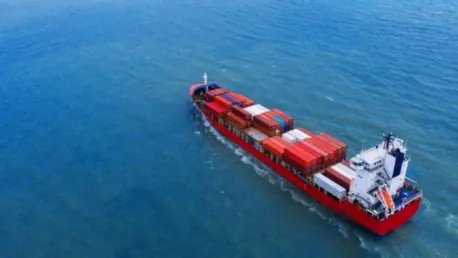As the world grapples with the pressing challenge of reducing greenhouse gas (GHG) emissions, the European Union has taken a significant step forward by introducing the FuelEU Maritime regulation, aimed at addressing GHG intensity in maritime transport. This regulation is the EU’s first technical initiative dedicated to diminishing GHG emissions from shipping and promoting the adoption of low- and zero-emission bunker fuels. The first ten years of FuelEU will be pivotal for exploring alternative fuels and technologies, shaping the future of maritime transport across the continent.
Key Provisions and Targets of FuelEU Maritime Regulation
Initial GHG Intensity Reduction Targets
The regulation stipulates that ships operating between EU ports must limit the average well-to-wake (WtW) GHG intensity of onboard energy. By 2030, the target is set at 89.34 grams of carbon dioxide equivalent per megajoule (gCO2e/MJ), and by 2035, it reduces further to 85.69 gCO2e/MJ. These targets represent a reduction of 2% and 6% from the 2020 baseline, respectively. These incremental targets provide shipowners with a transitional period to adapt their fleets and operations in anticipation of stricter, long-term goals. By 2050, the regulation aims for an 80% reduction in GHG emissions, underscoring the EU’s commitment to climate action.
Investing in vessels capable of utilizing low or zero GHG intensity fuels such as e-methanol and e-ammonia is crucial for compliance. The regulation incentivizes the use of these Renewable Fuels of Non-Biological Origin (RFNBOs) through a regulatory multiplier available until 2034. This multiplier effectively halves the onboard GHG intensity of RFNBOs, creating a compliance surplus that can be pooled among vessels. For example, a vessel operating on 90% e-methanol can potentially offset the GHG emissions of several other ships using conventional fossil fuels, thus fostering a collaborative approach to achieving emissions targets.
Cost Implications of Alternative Fuels
The use of RFNBOs, while beneficial for GHG reduction, presents a significant cost challenge for shipowners. Current estimates from the Mærsk Mc-Kinney Møller Center for Zero Carbon Shipping (MMMCZCS) place the cost of e-methanol at $2,750 per metric ton, starkly higher than the price of Very Low Sulfur Fuel Oil (VLSFO), which stands at $560 per metric ton. Despite the potential compliance surplus value generated by pooling arrangements, RFNBOs will likely remain cost-prohibitive in the short term. It is projected that these fuels will only achieve cost competitiveness post-2035, as production costs decrease and regulatory penalties on traditional fuels increase.
Given these challenges, early planning and investment are paramount for shipowners. The initial years of FuelEU Maritime regulation offer a window of opportunity to retrofit existing vessels and commission new builds that can run on low GHG intensity fuels. Establishing long-term agreements with fuel suppliers will also be beneficial in hedging against future price volatility and ensuring a steady supply of alternative fuels. As technology advances and economies of scale are achieved, the financial viability of RFNBOs is expected to improve, aligning economic and environmental objectives.
Encouraging Alternative Fuel Adoption and Infrastructure Development
Singapore’s Incentives for Alternative Fuel Use
In support of global efforts to reduce maritime GHG emissions, the Maritime and Port Authority of Singapore (MPA) has introduced incentives for ocean-going vessels utilizing alternative fuels during port stays. Vessels operating on zero-carbon fuels such as ammonia, B100 biofuel, or green methanol are eligible for full port dues concessions. Ships using lower blend fuels are granted reduced concessions, thus encouraging broader adoption of alternative fuels and fostering a culture of sustainability within the maritime industry.
These concessions by MPA highlight the importance of creating favorable economic conditions for the adoption of alternative fuels. By alleviating some of the financial burdens associated with using zero- and low-carbon fuels, port authorities can play a pivotal role in accelerating the transition towards sustainable maritime operations. Additionally, these initiatives serve as a blueprint for other ports worldwide, demonstrating how policy measures can effectively support the global agenda of decarbonizing shipping and mitigating climate change impacts.
Investments in CO2 Transport and Storage Innovations
As the world faces the critical challenge of reducing greenhouse gas (GHG) emissions, the European Union has made a significant advance with the introduction of the FuelEU Maritime regulation. This new rule targets the GHG intensity within maritime transport. It represents the EU’s first comprehensive technical effort to lower GHG emissions from shipping while also encouraging the use of low- and zero-emission bunker fuels. The regulation is poised to have a substantial impact over its first decade, serving as a crucial period for the exploration and implementation of alternative fuels and innovative technologies. This initiative promises to shape the future of maritime transport across Europe, steering the industry towards more sustainable practices and reducing its environmental footprint. The success of FuelEU Maritime could also set a precedent for other regions, potentially influencing global standards and contributing significantly to the worldwide reduction of GHG emissions from the shipping sector.









